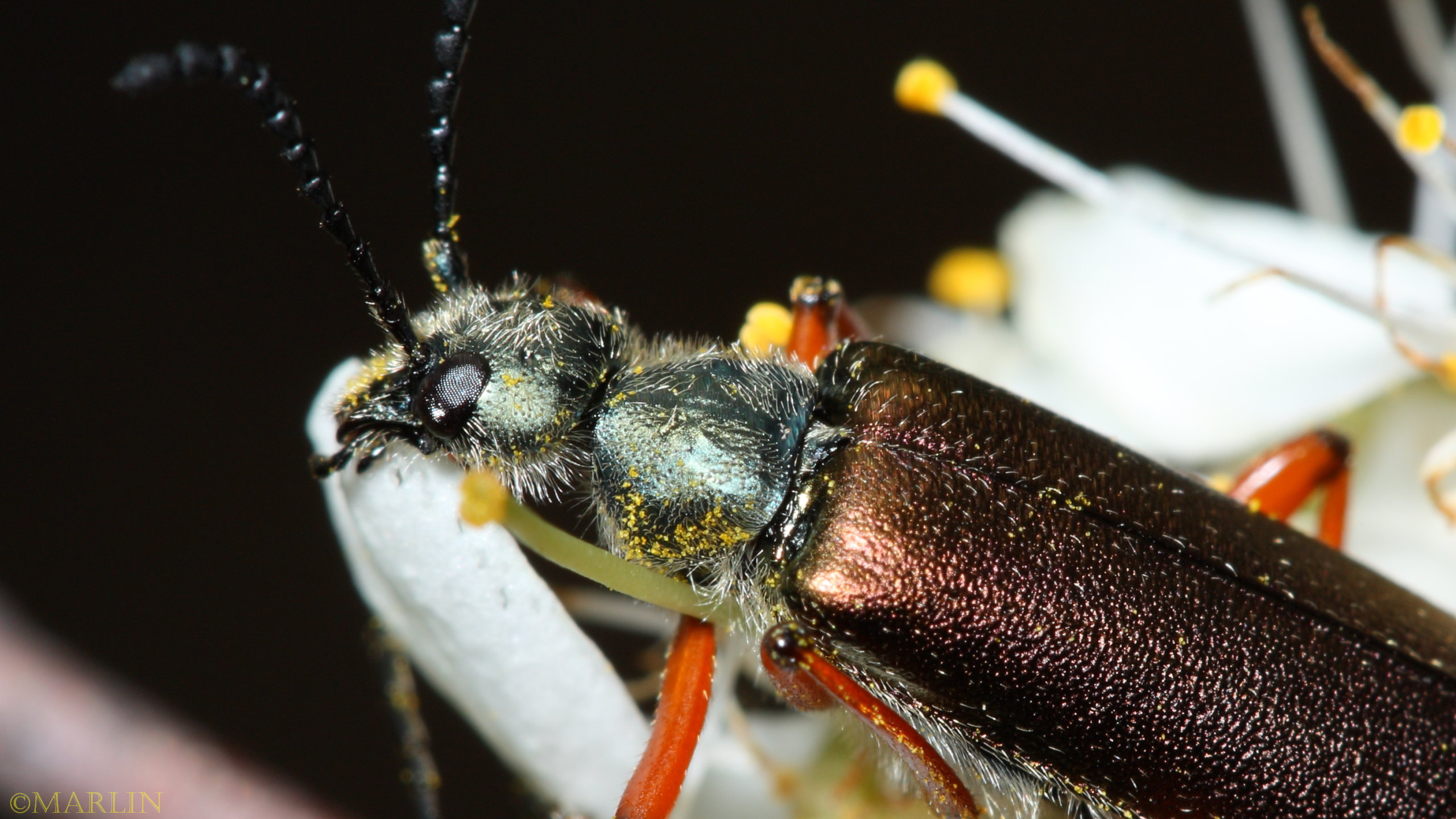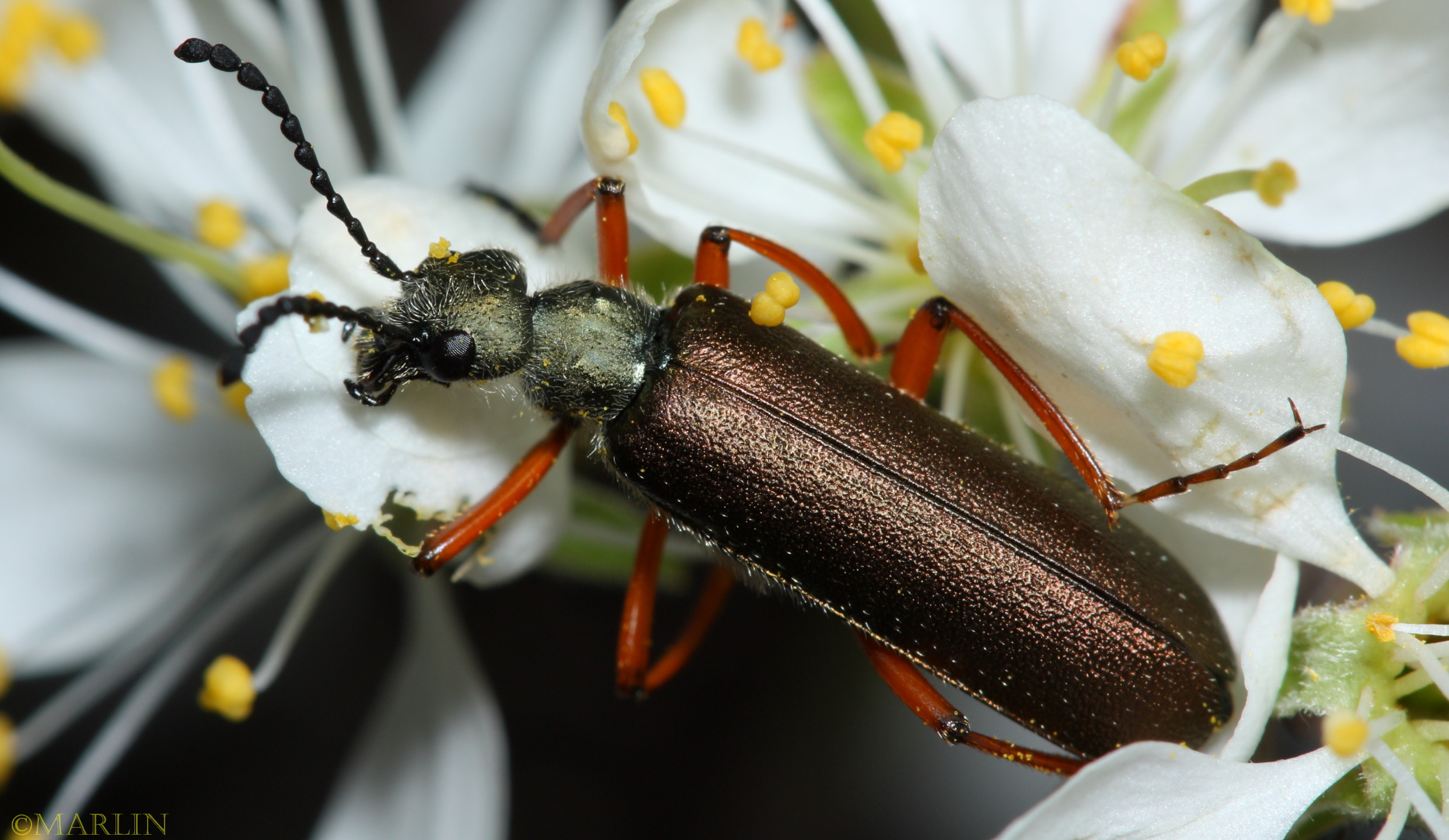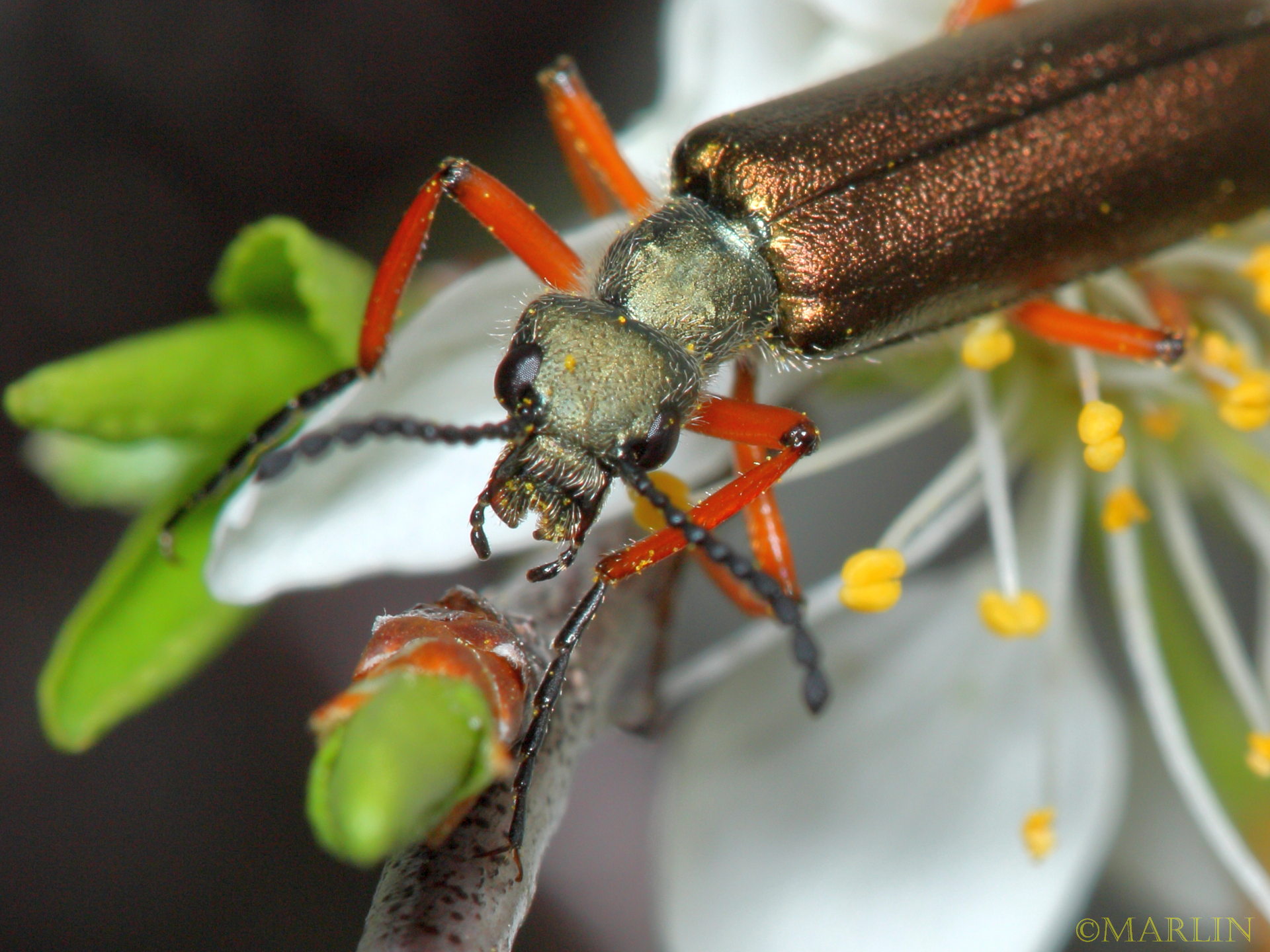Blister Beetle – Lytta aenea
Blister Beetle adults feed on leaves in the tops of a plant but are especially attracted to flowers where they feed on nectar and pollen. These early spring beetles are feeding on a blackthorn sloe, a relative of the common cherry tree.
Blister beetles produce cantharidin, a poisonous substance comparable to cyanide and strychnine in toxicity. Stored in the insects’ blood, the compound is stable and remains toxic even in beetle carcasses. Animals may be poisoned by ingesting beetles while grazing or eating harvested silage. Cantharidin can also cause severe skin inflammation and blisters.
Cantharidin is absorbed through the intestine and can cause symptoms such as inflammation, colic, straining, elevated temperature, depression, increased heart rate and respiration, dehydration, sweating, and diarrhea. There is frequent urination during the first 24 hours after ingestion, accompanied by inflammation of the urinary tract. This irritation may also result in secondary infection and bleeding. Taken internally, as little as 10 milligrams can be fatal in humans.
There are insects, including some beetles, flies, and bugs that eat live or dead blister beetles to obtain the protective qualities of this chemical defense; these so-called cantharidinophilous insects have acquired immunity from the chemical and remain unharmed. Male fire-colored beetles in the family Pyrochroidae are known to climb onto blister beetles and ingest the cantharidin exuded by the insect. Completely immune to the effects of the blistering agent, they use the chemical to attract females, who become the recipients of a cantharidin-laden sperm packet with which they coat their eggs.
Beetles Index | Longhorns | Leaf Beetles | Soldier | Blister | Lady | Scarab



